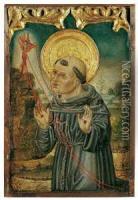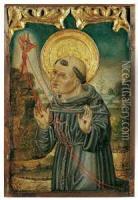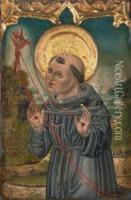Gabriel Malesskircher Paintings
Gabriel Malesskircher was a German painter active during the late Gothic period. His exact place of birth is not known, but it is believed that he was born around 1430. Malesskircher is primarily known for his religious artwork, which followed the traditional Gothic style that was prevalent in Germany at the time. His works include altarpieces, panel paintings, and frescoes for churches.
In the historical records, Malesskircher is first mentioned in 1461 when he became a citizen of Munich. He was an important figure in the Munich art scene and became a master in the city's painters' guild. During his career, he received commissions from various patrons, including members of the local nobility and religious institutions. His paintings were characterized by their vivid colors, attention to detail, and traditional iconography, reflecting the values and religious beliefs of the period.
One of his notable works is the altarpiece for the high altar of the Heilig-Kreuz-Kirche in Günzburg, which was commissioned by the local parish. This piece showcased his skill in creating complex compositions and his ability to imbue his figures with a sense of piety and devotion, which was greatly appreciated by his contemporaries.
Despite his significance during his lifetime, Gabriel Malesskircher's work was somewhat overshadowed by the later developments of the Renaissance, which brought about a shift in artistic styles and preferences. Nonetheless, his contributions to the art of the late Gothic period in Southern Germany remain an important part of the region's cultural heritage.
Malesskircher's date of death is recorded as 1495, and he is believed to have spent the majority of his life working in Munich. His surviving works can be found in various museums and collections, offering insight into the religious and artistic sensibilities of 15th-century Germany.



